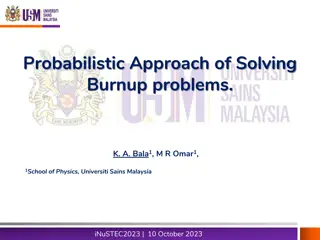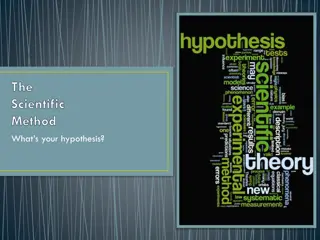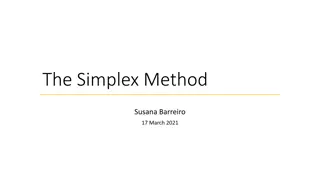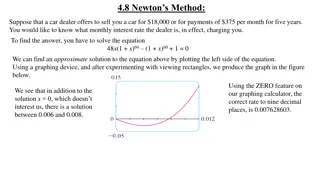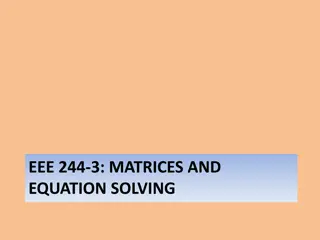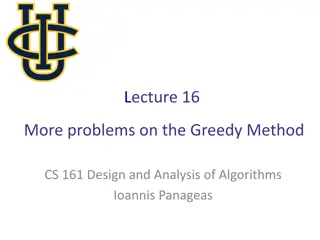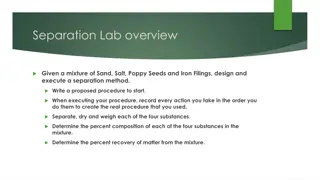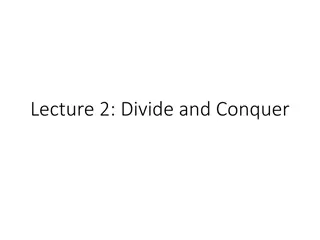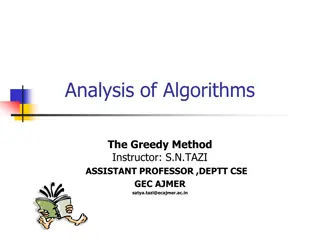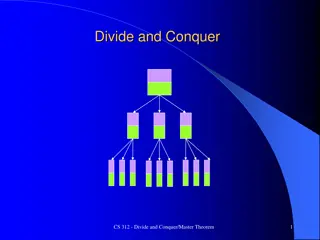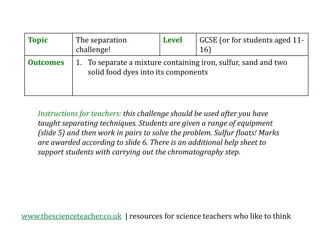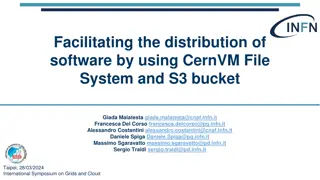Solving Mixture Problems Using the Bucket Method
Mixture problems occur in various scenarios like blending goods for sale or obtaining desired solutions. The bucket method involves setting up buckets with starting values, additive values, and the desired mixture to solve equations efficiently. An example problem is demonstrated step-by-step for clarity.
Download Presentation

Please find below an Image/Link to download the presentation.
The content on the website is provided AS IS for your information and personal use only. It may not be sold, licensed, or shared on other websites without obtaining consent from the author.If you encounter any issues during the download, it is possible that the publisher has removed the file from their server.
You are allowed to download the files provided on this website for personal or commercial use, subject to the condition that they are used lawfully. All files are the property of their respective owners.
The content on the website is provided AS IS for your information and personal use only. It may not be sold, licensed, or shared on other websites without obtaining consent from the author.
E N D
Presentation Transcript
Mixture Problems Bucket Method
Why we use this Mixture problems occur in many different situations. For example, a store owner may wish to combine two goods in order to sell a new blend at a given price. A chemist may wish to obtain a solution of a desired strength by combining other solutions. In any case, mixture problems may all be solved by using the bucket method.
The key to the bucket method is setting up the buckets correctly. Generally, the buckets will be set up as follows: What you start with What you add in The end result or mixture
Each bucket must contain: An amount (liters, tons, pounds, etc) A type (either percent or price)
Once all of the buckets are "filled" with an amount and a type, an equation may be determined. Example 1: How many pounds of coffee worth $1.00 per pound must be mixed with 15 pounds of coffee worth $1.60 per pound to obtain a blend worth $1.20 per pound?
Lets solve! Let x= number of pounds of $1.00 per pound coffee (this is what we are starting with, so it goes in the first bucket) X (amount) $1.00 (type)(type)
Next, enter the values for the coffee that you are adding in (15 pounds of coffee worth $1.60 per pound). 15 (amount) X (amount) $1.00 (type) $1.60 (type)
And finally, enter the values for the desired mixture or blend (coffee worth $1.20 per pound). 15 (amount) X (amount) $1.00 (type) $1.20 (type) $1.60 (Type)
Notice that all of the buckets are not "filled." To get the missing value, think of the problem this way: if we started with 3 pounds of the $1.00 blend and added in 15 pounds of the $1.60 blend then we would have a total of 18 pounds. So the missing value is found by adding the first two amounts. Therefore, we have:
X+15 (amount) 15 (amount) X (amount) $1.00 (type) $1.20 (type) $1.60 (Type)
Now that our buckets are filled, we simply multiply the two values in each bucket, making sure that we keep the operation (the plus sign and the equal sign) between each product. (1.00)(x)+(1.60)(15)=(1.20)(x+15)
Example 2 How much water must be added to 14 oz of a 20% alcohol solution to obtain a 7% alcohol solution?


